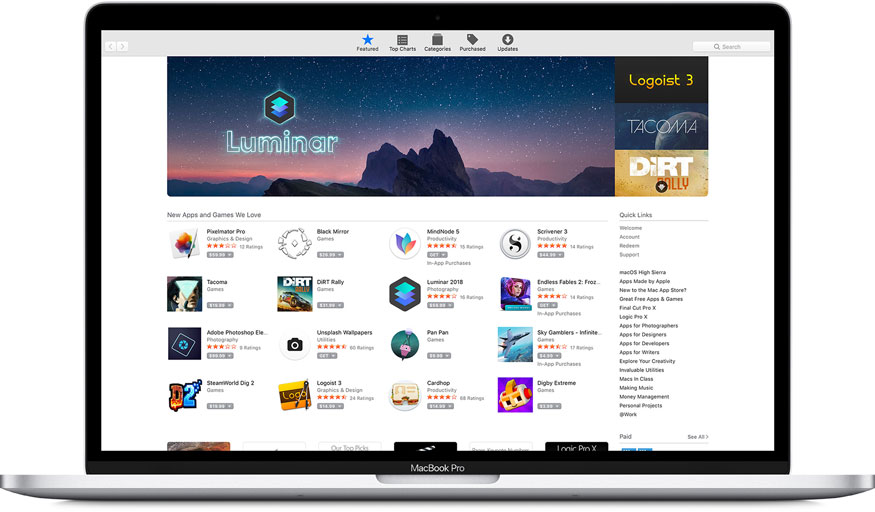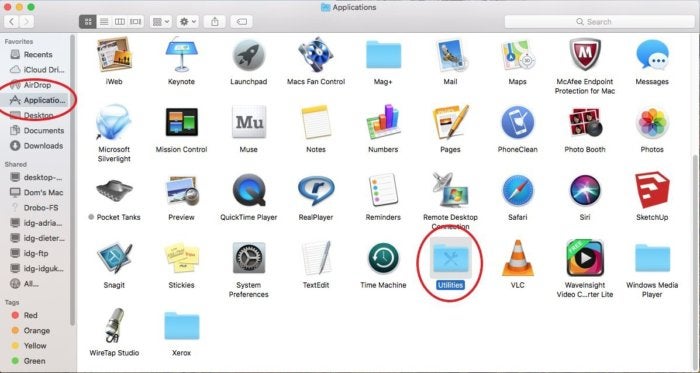Utilities App In Apple Mac
How to run Microsoft Database Utility in Mac In a case, your Microsoft Outlook in Mac has an issue, you may need to rebuild the Microsoft Database. Here is the how. Quit all applications. Hold down the Option key on the keyboard, and then start Outlook 2011. The App Store has a wide selection of Utilities apps for your iOS device. If Apple Books doesn't open, click the Books app in your Dock. Progress Indicator. Looking for Mac apps? Try the Mac App Store. Explore the world of Mac. Check out MacBook Pro, iMac Pro, MacBook Air, iMac, and more. Visit the Apple site to learn, buy, and get support. Browse and download Utilities apps on your Mac from the Mac App Store. The Mac App Store has a wide selection of Utilities apps for your Mac. Browse and download Utilities apps on your iPad, iPhone or iPod touch from the App Store. The App Store has a wide selection of Utilities apps for your iOS device.
Disk Utility can find and repair errors related to the formatting and directory structure of a Mac disk. Errors can lead to unexpected behavior when using your Mac, and significant errors might even prevent your Mac from starting up completely.
Before proceeding, make sure that you have a current backup of your Mac, in case you need to recover damaged files or Disk Utility finds errors that it can't repair.
Open Disk Utility

Start up from macOS Recovery, then select Disk Utility from the Utilities window. Click Continue.
If you're not repairing the disk your Mac started up from, you don't need to start up from macOS Recovery: just open Disk Utility from the Utilities folder of your Applications folder.

Locate your disk in Disk Utility
Choose View > Show All Devices (if available) from the menu bar or toolbar in Disk Utility.
The sidebar in Disk Utility should now show each available disk or other storage device, beginning with your startup disk. And beneath each disk you should see any containers and volumes on that disk. Don't see your disk?
In this example, the startup disk (APPLE HDD) has one container and two volumes (Macintosh HD, Macintosh HD - Data). Your disk might not have a container, and it might have a different number of volumes.
Repair volumes, then containers, then disks
For each disk that you're repairing, start by selecting the last volume on that disk, then click the First Aid button or tab. How uninstall app from mac.
In this example, the last volume on the disk is Macintosh HD - Data.
Click Run to begin checking the selected volume for errors.
- If there is no Run button, click the Repair Disk button instead.
- If the button is dimmed and you can't click it, skip this step for the item you selected, and continue to the next item.
- If you're asked for a password to unlock the disk, enter your administrator password.
After Disk Utility is done checking the volume, select the next item above it in the sidebar, then run First Aid again. Keep moving up the list, running First Aid for each volume on the disk, then each container on the disk, then finally the disk itself.
In this example, the repair order is Macintosh HD - Data, then Macintosh HD, then Container disk2, then APPLE HDD.
If Disk Utility found errors that it can't repair
If Disk Utility found errors that it could not repair, use Disk Utility to erase (format) your disk.
If your disk doesn't appear in Disk Utility
If Disk Utility can't see your disk, it also can't see any containers or volumes on that disk. In that case, follow these steps:
- Shut down your Mac, then unplug all nonessential devices from your Mac.
- If you're repairing an external drive, make sure that it's connected directly to your Mac using a cable that you know is good. Then turn the drive off and back on.
- If your disk still doesn't appear in Disk Utility, your disk or Mac might need service. If you need help, please contact Apple Support.
See your network at a glance
Best Free Mac Utilities
Quickly see the status of your network and the devices connected to it in a graphical overview.
Automatically update your base stations
Utilities App In Apple Macbooks
Keep your network running smoothly by having AirPort Utility automatically check for software updates.
Manage your Wi-Fi network from your devices
With the AirPort Utility app on your iOS and iPadOS devices, you can set up and monitor your network from your devices as easily as you can from your Mac.
To explore the AirPort Utility User Guide, click Table of Contents at the top of the page, or enter a word or phrase in the search field.
If you need more help, visit the AirPort Support website.